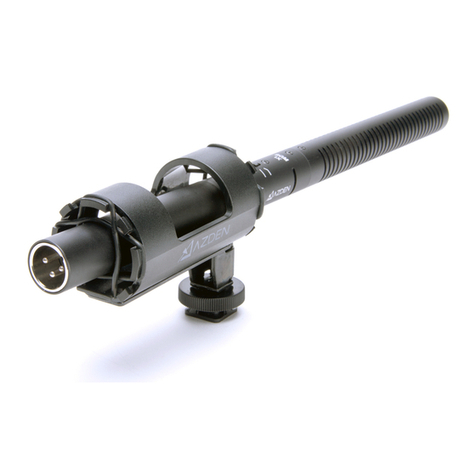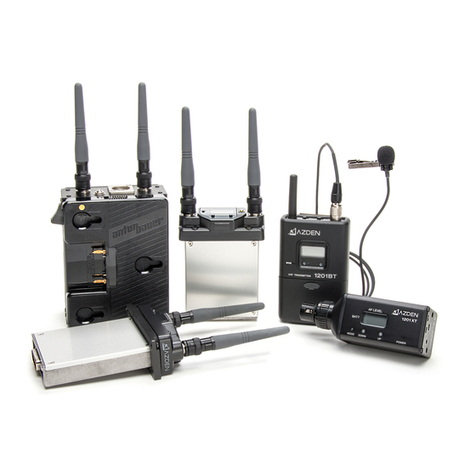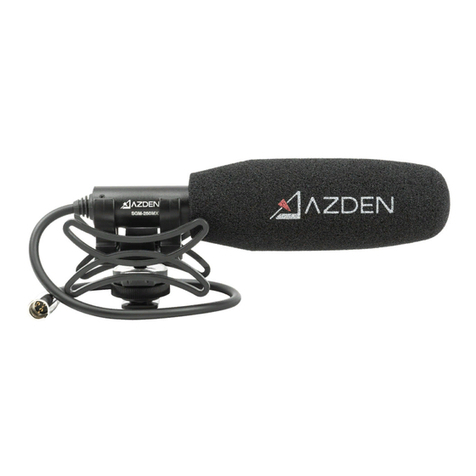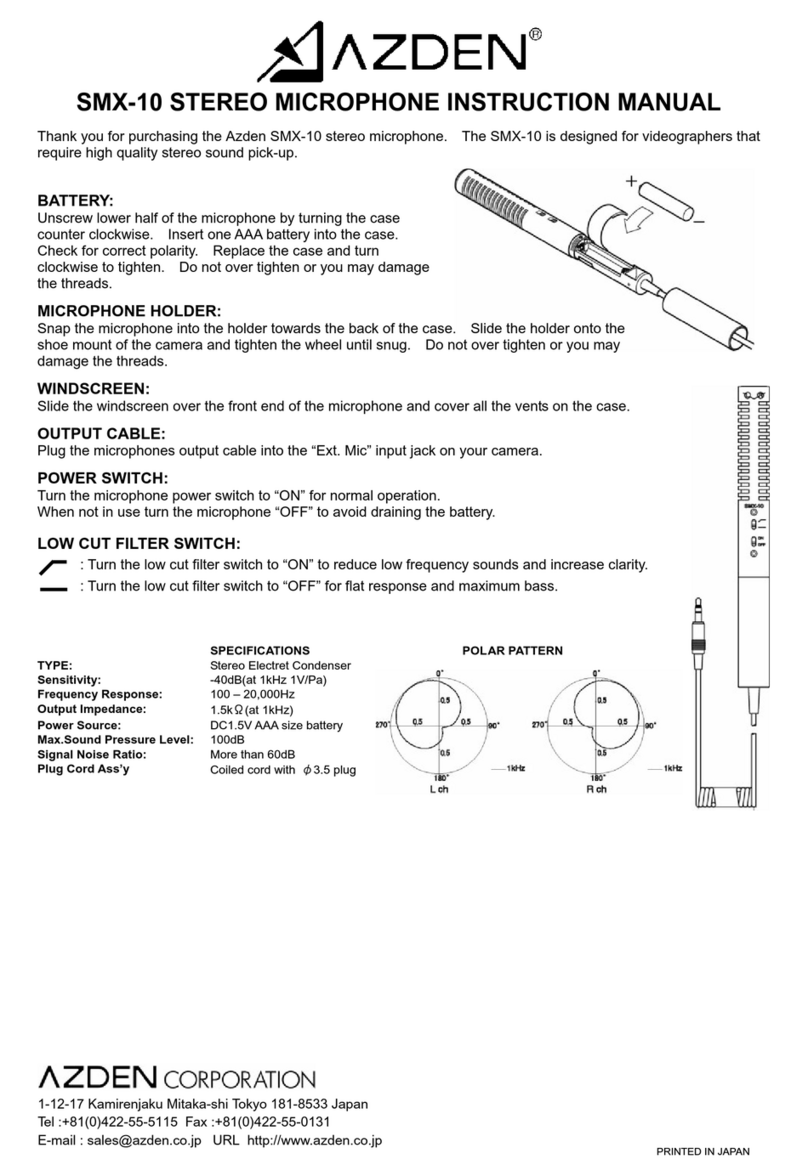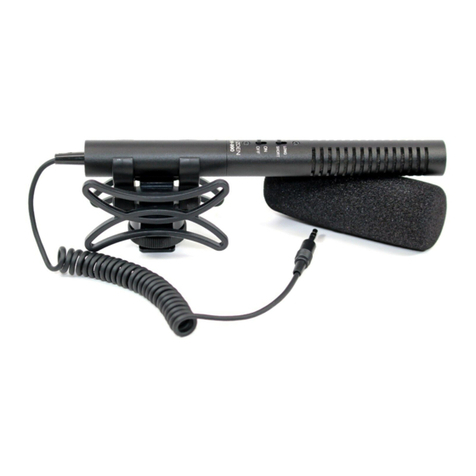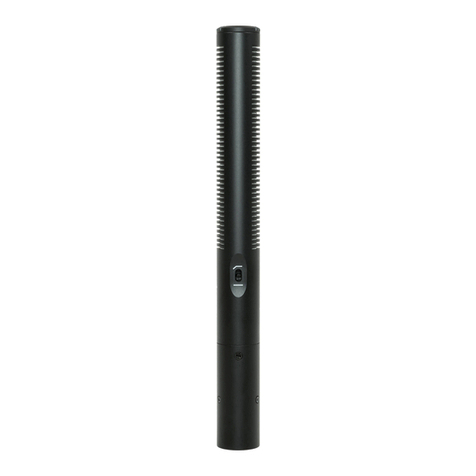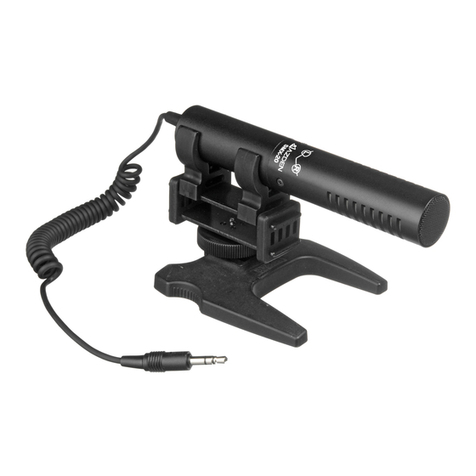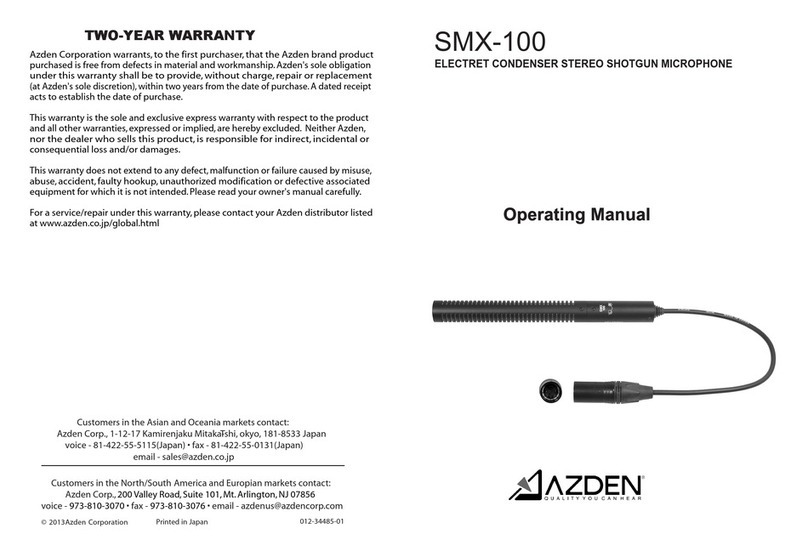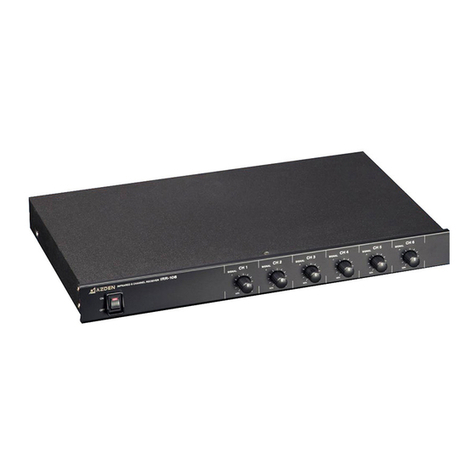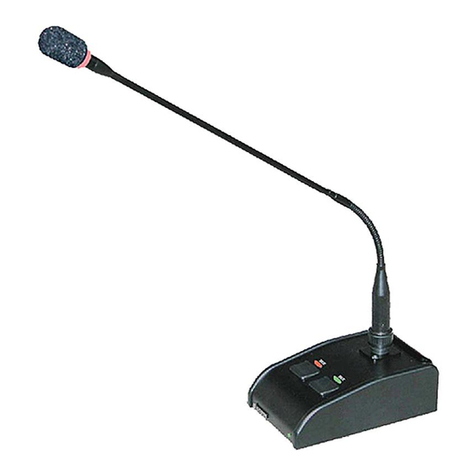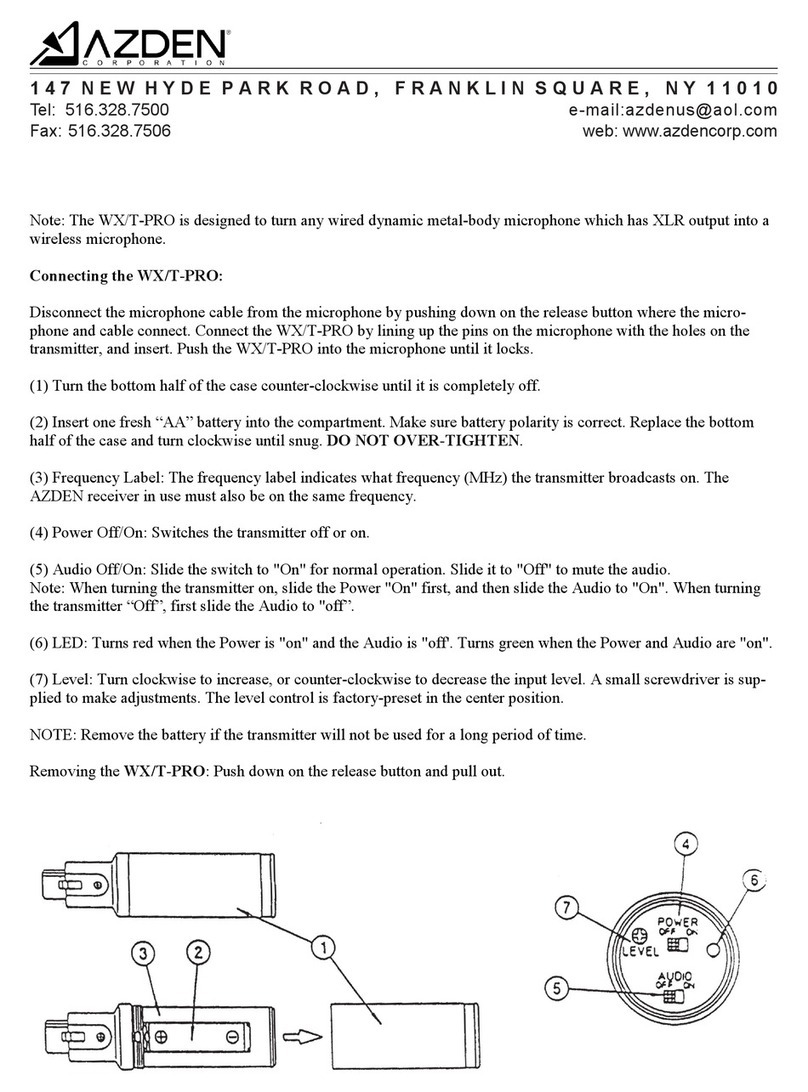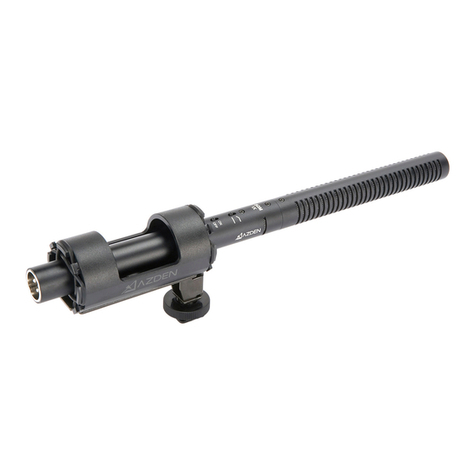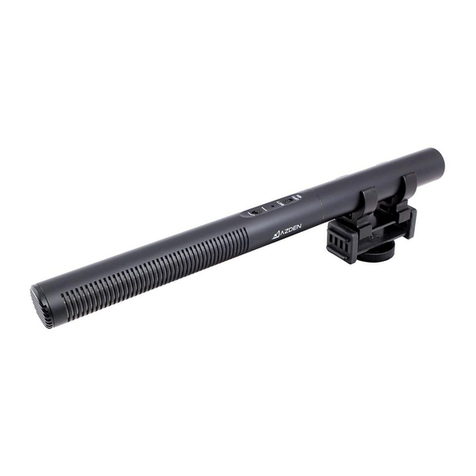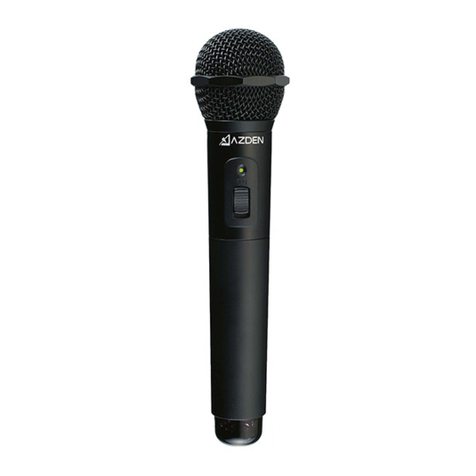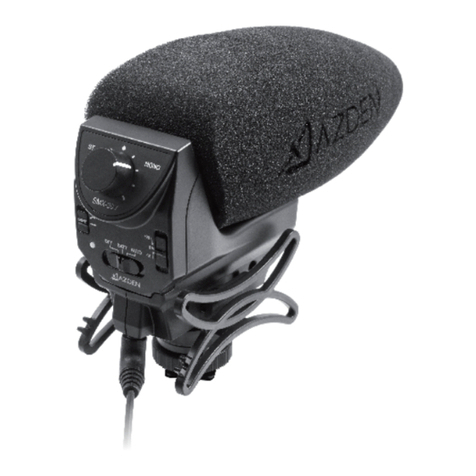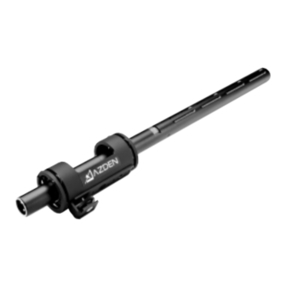
Specifications
Freq. Response 20 Hz - 20 kHz
Low-Cut Filter Selectable @ 75 Hz / 3 dB per Octave
Polar Pattern Hypercardioid
Dynamic Range 114 dB
Sensitivity -35 dB
Impedance 100 Ohms
Max Input SPL 132 dB SPL (1 kHz @ 1% T.H.D.)
S/N Ratio 76 dB (1 kHz @ 1 Pa)
Power Requirement 11 - 50 V Phantom
Output Gold-plated 3-pin XLR
Dimensions 250 mm x Φ21 mm (9.84" x 0.83") (L x D)
Weight 110 g (3.9 oz)
Accessories mic clip, foam windscreen, carrying pouch
Polar Pattern
Frequency Response
Overview
The SGM-250H is a professional hypercardioid condenser shotgun
microphone intended for video production applications. As part of
Azden’s Ni-Go-Maru Series (250) microphones, you can expect
high-level performance, natural sound quality and excellent build
quality, all backed by one of the best product warranties in the industry:
a limited 10-Year Warranty against manufacturer defect (online
registration required).
The characteristics that set the SGM-250H apart from the rest of the
Ni-Go-Maru Series are its hypercardioid mic element and 50% longer
interference tube. Together, these design elements combine to create
a highly focused pick up pattern that’s more sensitive to on-axis sounds
and better at rejecting sound approaching from the sides.
This makes the SGM-250H well suited for recording in challenging
acoustic environments. Whether the space you’re in has a lot of
unavoidable background noise, or produces significant reverberation,
the SGM-250H will do a better job at isolating your speaking subject
and recording clear audio.
Low-Cut Filter Switch
When engaged, the low-cut filter switch (a.k.a. high-pass filter) will
attenuate frequencies below 75 Hz at the rate of -3 dB per octave. The
switch has two positions:
Low-Cut (ON)
Flat (OFF)
It is not recommended that you adjust the low-cut filter switch while
recording as doing so may produce an audible noise in your recording.
When to engage the Low-Cut Filter Switch?
It’s most likely best to leave the low-cut filter switch OFF unless your
recording environment is plagued with an unavoidable, low-frequency
noise. Fans, electric motors, HVAC systems, cars on a busy road and
wind are some examples of what can produce unwanted noise in the
lower frequency range. Bear in mind that a low-cut filter cannot totally
eliminate noise, but merely reduce it, which in turn can improve the
intelligibility of recorded speech.
Power
Phantom power is a DC voltage supplied through a balanced
microphone cable and used to power the electronics of the connected
microphone. Most professional cameras, mixers and audio interfaces
with microphone XLR preamps have the ability to supply phantom
power. If the equipment you use does not, you will have to utilize a
separate external phantom power supply.
Most commonly, phantom power is supplied at 48 volts. This is the
optimum voltage for the SGM-250H. It is possible that your connecting
equipment supplies a different voltage. This microphone is rated to
work on a voltage between 11 and 50 volts, however, performance will
degrade with lower voltages and damage to the electronics could result
when using voltages in excess of this range. It is recommended that
you consult the manuals of any equipment you intend to use with the
microphone beforehand. Please note that the warranty does not cover
damage caused by using phantom power beyond what the microphone
is rated for.
Connecting to Camera or Audio Recorder
To connect the SGM-250H to a camera or audio recording device, use
a high-quality, balanced XLR microphone cable (sold separately). Be
sure that phantom power is switched on for your mic input and be
aware that you may also need to adjust your camera’s or audio
device’s settings before signal from the microphone can be recorded.
XLR pin assignments
SGM-250H Professional Hypercardioid Shotgun Microphone
English
3 Pin XLR Male
Hot
Cold
Shield
21
3
+0
+20
+10
-10
-20
-30
100 1k 10k
-40
0°
90°
180°
[dB ]
[Hz ]
